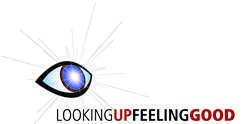Wearable Technologies coming to some clothing near you
A few years ago whilst researching and generating ideas for the National Geographic Channel’s futures based TV shows ‘Future Matters’ I discussed the idea of what I then called ‘WEs’ or Wearable Electronics. I mentioned that this was a substantially different approach than portable electronics, which is what most mobile phones and laptop computers were at that stage – useful electronic devices that you could carry around with you to perform a series of functions. WEs were embedded into your clothing, they quite literally became a part of what you were. And now it seems that MIT have taken a giant step towards creating the world’s first truly embedded wearable technology as showcased at TED recently
They’ve dubbed it a ‘sixth sense’ style of unit and as you can see in the link below, it provides a level of functionality and automatic data engagement that is fast and impulse like. This differs substantially from mobile phones that enable you to provide access to information provided you deliberately apply them to that purpose. The MIT unit is, well light years ahead by comparison.
As someone who hasn’t been tied to a mobile phone of any description for the best part of 6 years, this is the type of unit that might get me to re-engage with the disruptiveness of mobile phone technology.
Pattie Maes’ from MIT, provides the presentation, giving a great wrap to her student Pranav Mistry (someone whose brain I’d very much like to meet) who devised the current model. The unit combines a projector, phone, camera and mirror and brings my thinking of WE’s much closer to reality.
I think that the ‘Sixth Sense’ metaphor might actually do this technology a disservice. To me it is more about ‘extended consciousness’ – something that can finally break the neural limitations as cited in Miller’s ground breaking paper ‘The magical number 7 (+ or – 2)’ which showed how for most people, the most amount of conscious information we can hold is seven, plus or minus two pieces of information. This has the potential to rapidly speed up and have available to us, far greater volumes of potential useful and important information right before our eyes.
You can watch the presentation here at this link
I keep reading posts that Uber is an example of the ‘sharing economy’, the one in which people freely share what they have with others. But it’s NOT – it is instead part of what I call the ‘Utilisation Economy’ which is about use of spare capacity. About 15 years ago I began writing about…
Read More >One of the reasons I founded The Australian Strategic Planning Institute was to ensure that high quality futures perspectives were included in the Strategic Planning process. Typically they were not which meant too many businesses and organisations were planning for futures that just would not exist as expected, meaning wasted resources and sometimes and marked…
Read More >As Victorian edges its way into a new drought phase and plays catch up to other parts of the country, I’ve been pushed to remember an article I wrote about our then State Government’s push to get people to reduce the length of their showers. The Four Minute Shower was an attempt to highlight just…
Read More >Sometimes when you look at enough assorted pieces of information a clear pattern emerges. In a previous role I was tasked with looking at the Future of Education, a topic I delved deeply into for almost 3 years. And in 2003 in a piece titled ‘The Future of Commercial Education’ I predicted that by 2015,…
Read More >Tomorrow I’ll be at the State Library of Victoria as part of the #V21 Digital Summit. In my futurist, pragmatist role I’ll be presenting few ideas about why ‘Your Future is NOT an App’, then later in the day facilitating an onstage debate about Disruption’s role in Innovation. And if it is anything to go…
Read More >I’ve been having a think lately about whether the use of Interest Rate movements by the Reserve Bank is actually too clumsy an instrument for effective economic management. The potential weakness has emerged only in recent times as the signs of a world-wide economic melt down have begun to expose one of the limitations of…
Read More >There’s a few problems with the successful leadership lists that bounce their way around the internet. In my opinion they lack context – the reality check that only comes by having a full appreciation of an individual organisation’s particular circumstances. Unfortunately many of these lists of ‘required leadership behaviours’ offer shallow quick fix advice that…
Read More >There’s no doubt that coal has a legitimacy problem with large swathes of the public around the world. Once a darling of energy and still in relative abundant supplies, Coal provides significant levels of energy per gram consumed. Yet the end outcome is now known to be incredibly harmful to localised communities needing to breathe…
Read More >At almost every stage in a shift in the way societies and organisations operate, there comes a period of extreme ‘unsettled-ness’. This period may show itself in the form of the doldrums (where things seem unusually calm but nothing seems to be happening) or in busyness (where there’s lots of activity but nothing seems to…
Read More >Sometimes when we have the chance to say something, we don’t. About two years ago one of my uncles died and I should have spoken at his funeral. This personal post is what I should have said to the public gallery that attended ‘Hi everyone. I’m Marcus and Jim was one of my three uncles.…
Read More >
